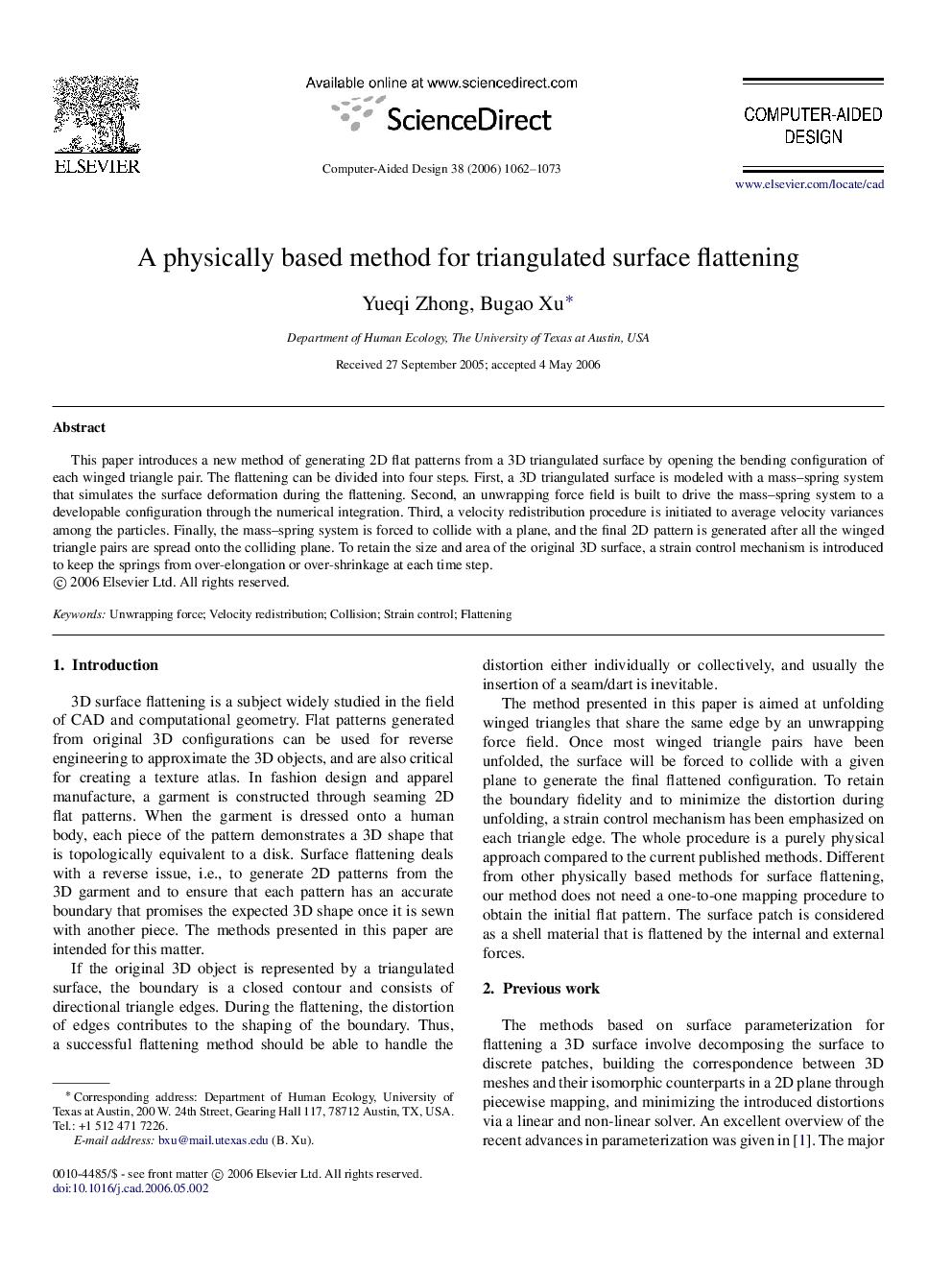| Article ID | Journal | Published Year | Pages | File Type |
|---|---|---|---|---|
| 440488 | Computer-Aided Design | 2006 | 12 Pages |
This paper introduces a new method of generating 2D flat patterns from a 3D triangulated surface by opening the bending configuration of each winged triangle pair. The flattening can be divided into four steps. First, a 3D triangulated surface is modeled with a mass–spring system that simulates the surface deformation during the flattening. Second, an unwrapping force field is built to drive the mass–spring system to a developable configuration through the numerical integration. Third, a velocity redistribution procedure is initiated to average velocity variances among the particles. Finally, the mass–spring system is forced to collide with a plane, and the final 2D pattern is generated after all the winged triangle pairs are spread onto the colliding plane. To retain the size and area of the original 3D surface, a strain control mechanism is introduced to keep the springs from over-elongation or over-shrinkage at each time step.
